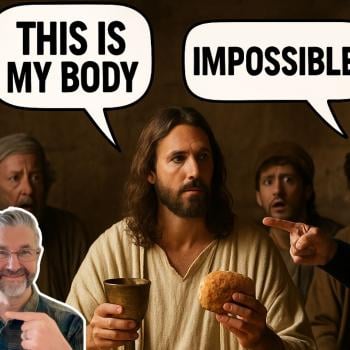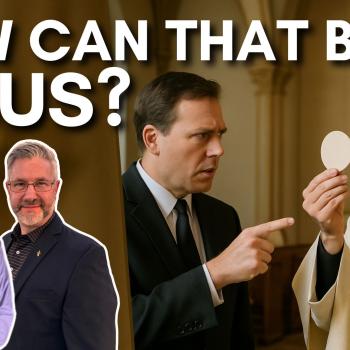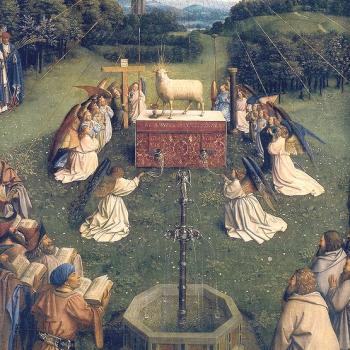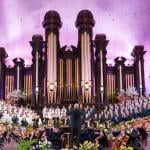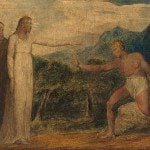
[Excerpts from the original 750-page 1994 version of my first book, A Biblical Defense of Catholicism]
*****
1. Alan Schreck
The Catholic Church has never taught that in the Mass Jesus is “resacrificed” or offered up to suffer again. The Catholic Mass is called a sacrifice because it “re-presents,” “e-enacts,” or presents once again before us, the one sacrifice of Christ on Calvary . . . What Jesus did in the past — his death on the cross — is present to God . . . In the Mass . . . his one sacrifice on Calvary is made real and present to us by God, so that we can enter into this central mystery of our faith in a new way. (Catholic and Christian, Ann Arbor, Michigan: Servant Books, 1984, 133-134)
2. Thomas Howard
The liturgy, like prayer itself, pierces through mere time, and . . . “makes present” that which has indeed occurred only once, and once and for all. No human formulary can quite satisfy us here. Christ died once, but . . . his sacrifice . . . is always present in the heavenly temple, as it is in the Eucharist here on earth. (Evangelical is Not Enough, Nashville: Nelson, 1984, 128)
3. Servant of God Fr. John A. Hardon, S. J.
Christ . . . is capable now, as he was on Good Friday, of freely offering himself to the Father. He can no longer die since he is now in a glorified body, but the essence of his oblation remains the same. It is the continued willing surrender of himself to the will of the Father. (The Catholic Catechism, Garden City, New York: Doubleday, 1975, 466-467)
The Mass cannot be understood apart from Calvary, of which it is a re-presentation, memorial, and effective application of the merits gained by Christ. (Pocket Catholic Dictionary, New York: Doubleday Image, 1980, 248)
4. Frank Sheed
The Victim, once slain, now deathless, stands before God, with the marks of the slaying still upon Him — “a Lamb standing, as it were slain” (Rev. 5:6). (Theology For Beginners, New York: Sheed & Ward, 1957, 207)
5. John L. McKenzie
The atoning value of the death of Jesus is applied, not expanded in the Mass . . . The Church repeats what Jesus told it to repeat, the rite of the Supper, and does not repeat what cannot be repeated, the death of Jesus . . . The Roman Church regards her priests as visible representatives of the one high priest. The Mass is offered in the name of the entire Church . . . (The Roman Catholic Church, Garden City, New York: Doubleday Image, 1969, 184, 186)
6. Martin Scott
At Mass it is Christ Himself who offers the sacrifice, the priest acting in His stead . . . The Mass glorifies God, by offering Him what is of infinite worth, and sanctifies man by putting before him the price of redemption. (Things Catholics are Asked About, New York: P. J. Kenedy & Sons, 1927, 128, 133)
7. Karl Adam
The priest does not offer for himself alone. Nor does he merely offer as the people’s representative . . . On the contrary the unity between priest and people is a mystically real unity . . . of the priesthood of Christ, in which both priest and people share, though in different degrees. (The Spirit of Catholicism, translated by Justin McCann, revised edition, Garden City, New York: Doubleday Image, 1954 [originally 1924], 135)
The Sacrifice of Calvary, as a great supra-temporal reality, enters into the immediate present. Space and time are abolished. The same Jesus is here present who died on the Cross . . . So Holy Mass is a tremendously real experience, the experience of the reality of Golgotha.
Heiler [a Protestant scholar] laments in vigorous terms that the Reformation was not able . . .:
to enkindle that intimate and fervent life of prayer which is excited by the Catholic service of Mass. I have observed the life of prayer in both communions, long and carefully . . . and I have again and again received the impression that . . . there is more and more inward prayer in Catholic than in Protestant worship . . . I am continually reminded of Wellhausen’s characteristic saying that Protestant worship is at bottom Catholic worship . . . with the heart taken out of it. (Ibid., 197-198)
8. Old Testament: General Observations (Ludwig Ott)
Prefigures of the Eucharist are the Tree of Life in Paradise, the sacrifices of Abraham and Melchisedech, the manna in the desert, the Shew-bread in the Temple, and the various Sacrifices of the Old Covenant, especially that of the Paschal Lamb. (Fundamentals of Catholic Dogma, Rockford, Illinois: TAN Books, 1974, 370)
Genesis 14:18 / Psalm 110:4
And Melchizedek king of Salem brought forth bread and wine: and he was the priest of the most high God.
The Lord hath sworn, and will not repent, Thou art a priest for ever after the order of Melchizedek.
Melchisedech brought out bread and wine . . . in order to offer a sacrifice to God, as was customary in the celebrations of victory . . . This interpretation is affirmed by the express indication of Melchisedech’s priesthood. The specific priestly activity is sacrifice. Christ, according to the Messianic prophecy of Ps 110:4, which the Epistle to the Hebrews (5:6; 7:1 et seq.) confirms, is a Priest according to the order of Melchisedech, that is, He is a King and Priest at the same time . . . In the sacrifice of Melchisedech the Fathers see the archetype of the Eucharistic sacrifice. (Ibid., 403)
Isaiah 66:18, 21
. . . I will gather all nations and tongues . . . 21 And I will also take of them for priests and for Levites, saith the Lord.
Isaiah proclaims a priesthood from among the Gentiles for the Messianic era; . . . A special priestly status is, according to the Old Testament view, not conceivable without sacrifice. (Ibid., 404)
Malachi 1:11
For from the rising of the sun even unto the going down of the same my name shall be great among the Gentiles; and in every place incense shall be offered unto my name, and a pure offering: for my name shall be great among the heathen, saith the Lord of hosts.
God is here proclaiming the abolition of the Jewish cult of sacrifice and forecasting a new, clean sacrifice . . . The universality of the veneration of God and of the new sacrifice which is proclaimed . . . points clearly to the Messianic era (cf. Ps 22:27-31; Is 49:6). The sacrifice of the Cross cannot be meant, as this was offered in one place only. The prophecy is fulfilled in the Holy Sacrifice of the Mass, which, . . . in view of the sacrificial gift and of the primary sacrificing priest, is a clean oblation. (Ibid., 403)
***
(originally from 1994)
Photo credit: with Servant of God, Fr. John A. Hardon, S. J., on the day I was received into the Church by him (2-9-91), along with wife Judy (returning to the Church).
***




